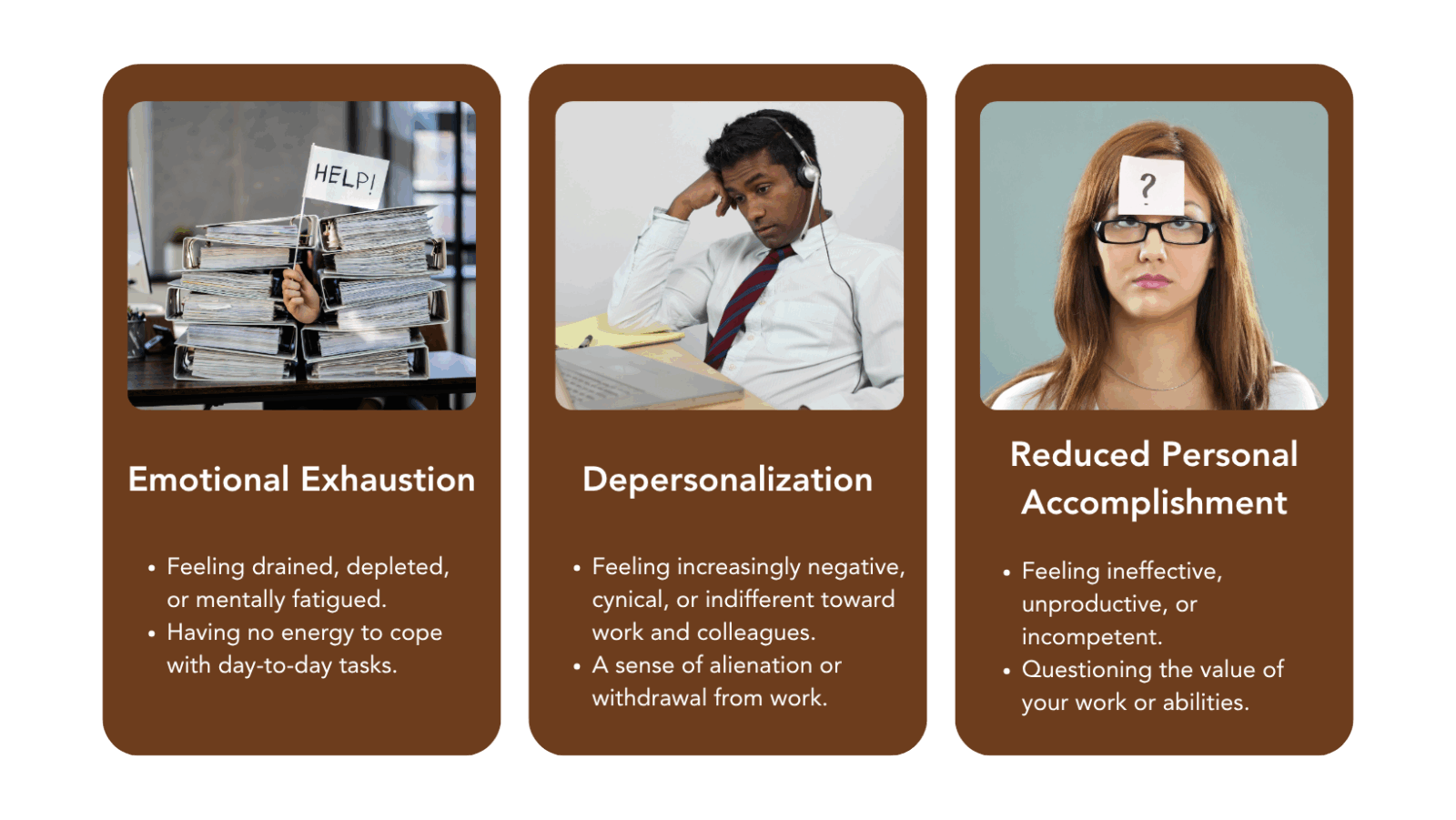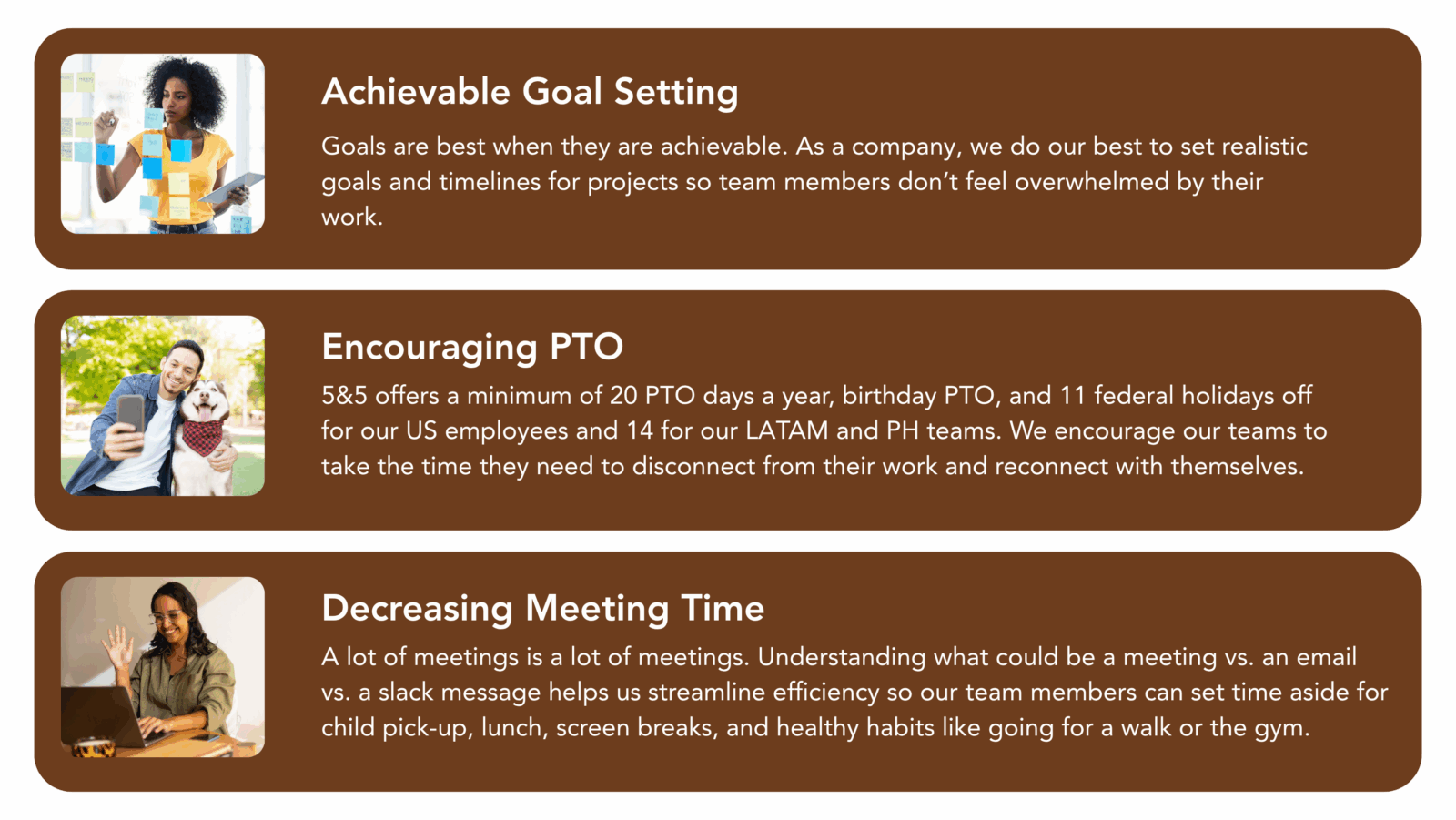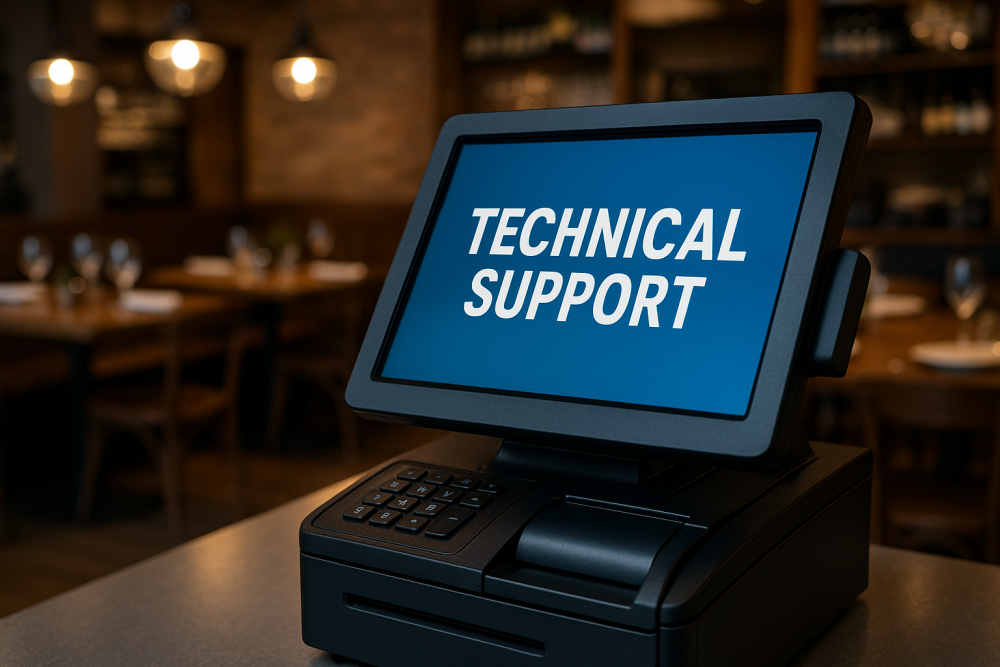



Less Burnout, More Balance
July 10, 2025

According to the U.S. Bureau of Labor Statistics (est. 2024), the average tenure for millennials born between 1981 and 1996 is approximately 2.9 years with a single employer. As of May 2025, the national unemployment rate is 4.3%, or approximately 7.25 million people. According to a survey by Gallup, voluntary turnover among millennials is approximately ~21%, with close to two-thirds of millennials actively looking for new job opportunities at any given time. So, with the unemployment rate rising, why are millennials and Gen Z employees voluntarily leaving employers for different opportunities?
What Do Millennial & Gen Z Employees Want?
Based on Gallups’s Employee Retention and Attraction Indicator, a collection of self-reported employment data, US employees are leaving their employers for a number of reasons:
– Stale pay and benefits
– Minimal professional development and career growth opportunities
– Conflicts with management/leadership
– Return to work or relocating for work
So what are employees looking for?

Why do employees really move on?
Aside from pay and benefits, having better work/life balance and opportunities that align with strengths and passions are the most significant reasons for employee separation. These go hand in hand. Employees are more likely to grow in their role and pursue career advancement with the same employer if they have a healthier work/life balance, and clear policy or benefits that support mental health. As employees or employers, we have heard words like work/life balance, whole-self workplaces and vocational wellness, but what does that really mean? How do we know if our workplace prioritizes work/life balance? Let’s unpack that.
In 2023, Gallup reported that Millennials and Gen Z were the most burned-out age groups. As defined by the World Health Organization (WHO), burnout is a “syndrome conceptualized as resulting from chronic workplace stress that has not been successfully managed.” Burnout includes three key dimensions:

What do all these dimensions have in common? They are not compensation-driven–they are culture-driven. Burnout behaviors manifest in a number of ways: quiet quitting, decline in creativity or performance, increasing conflicts or irritability, and less desire to collaborate.
What Can We Do?
Let’s connect the dots: Millennials and Gen Z employees are voluntarily leaving their roles because they are losing incentive, career growth, and personal/professional wellness–all of which can be attributed to burnout. In another Gallup survey, 28% of US millennials report feeling burnout “very often or always,” with an additional 45% feeling burned out only “sometimes.” As recently as July 2024, Deloitte reported that 70% of Gen Z and Millennial employees combined reported burnout symptoms within the last year. So, how can we adjust our culture to be more proactive about preventing burnout and maximizing our retention? In our experience at 5&5, it boils down to two things: setting the example and being transparent.
Setting a Cultural Example
5&5 Leadership is committed to empowering team members to be the best versions of themselves, both personally and professionally. In order to do so, we do our best to establish a clear set of norms and secure a transparent space in our 1:1 meetings to discuss them!
Here are some examples we’ve implemented:
1. Modeling Professional Boundaries: If we send messages after working hours, we are setting an unspoken expectation for our direct reports to also check and respond to messages after hours. We do our best to ensure that non-emergency messages are sent during working hours so direct reports can disconnect from their day-to-day.
2. Destigmatizing Talking about Mental Health: We strongly believe in reducing the stigma surrounding mental health in the workplace. As a company and in 1:1s with respective direct reports, we encourage normalizing conversations on mental health and work/life balance. We use our 1:1s, anonymous engagement surveys, and our new company-wide Town Hall forum, to create a dialogic space for our team members to share their thoughts, feelings, and mental health needs.
3. Giving Regular and Transparent Feedback: Feedback should never be a surprise to anyone, nor should it be a surprise to get or give positive feedback. Feedback is instrumental for team members to grow in their roles and in their careers, and most importantly, we believe feedback goes both ways. A direct report or a team member, regardless of position or tenure, should feel encouraged to share their feedback and request feedback at any time. At 5&5, we use Lattice, a people management platform to run two formal performance review periods, and to share informal public praise and private feedback.
Setting Workload Expectations

Exemplifying Team Support & Connection
1. Quality of Life Stipend: One of the benefits offered by 5&5 is the Quality of Life stipend. Every month, team members can expense anything that improves their quality of life up to a region-specific amount. For example, I submit my gym membership and my streaming services!
2. Non-Work Bonding Events: Each month, 5&5 hosts a company bonding event for all team members to join and connect with their team. We just hosted one last week, where 20+ people played Fall Guys (a free multiplayer game) together. It was so nice to see team members bonding over something fun that wasn’t about work. Also, individual departments are encouraged to host their own bonding events so teams have their opportunity to grow together.
At the end of the day, retention is important, but that doesn’t mean team members won’t ever leave a role or an employer. However, what we can do is to give every reason for a person to stay, and to do our best to minimize the challenges they face as they do. Setting an example for a healthier working environment can reduce burnout and set the tone for better career development, ultimately returning the trust employees give us.
If you or anyone you know is struggling with their mental health, please visit the National Alliance on Mental Illness, or please call 1-800-273-TALK (8255).











Leave a Reply